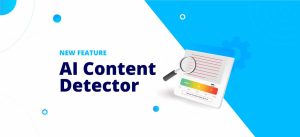Introduction
In the era of Industry 4.0, manufacturers are embracing digital transformation to stay competitive, improve efficiency, and innovate their operations. Among the revolutionary technologies driving this change, Microsoft Azure IoT Hub and Digital Twins stand out as powerful tools enabling smart manufacturing. Together, these technologies help businesses create connected factories, optimize production lines, and make data-driven decisions with unprecedented precision.
This article explores how Azure IoT Hub and Digital Twins empower smart manufacturing, the benefits they offer, and how integrating Microsoft Azure Remote Desktop Services enhances operational management and remote accessibility in manufacturing environments.
Understanding Smart Manufacturing
Smart manufacturing leverages advanced technologies—such as IoT (Internet of Things), AI (Artificial Intelligence), and cloud computing—to create intelligent, connected systems that automate processes, monitor assets in real-time, and predict maintenance needs. This leads to improved product quality, reduced downtime, and more agile supply chains.
A critical component in this digital transformation is the ability to collect, analyze, and act on vast amounts of data from factory equipment, sensors, and production systems. Microsoft Azure provides a comprehensive platform to facilitate this through its IoT Hub and Digital Twins services.
What is Azure IoT Hub?
Azure IoT Hub is a fully managed service that acts as a central message hub for bi-directional communication between IoT applications and the devices they manage. It allows manufacturers to securely connect millions of IoT devices, gather telemetry data, and control those devices remotely.
Key features include:
- Secure device connectivity and management: Azure IoT Hub ensures secure authentication, data encryption, and device management.
- Real-time data ingestion: Collect data from sensors, machines, and equipment in real time.
- Integration with Azure services: Seamlessly integrates with Azure Stream Analytics, Azure Functions, and Azure Machine Learning for advanced data processing and insights.
- Device provisioning and updates: Simplifies onboarding new devices and deploying software updates remotely.
In manufacturing, Azure IoT Hub acts as the nervous system of a smart factory, continuously monitoring machines and equipment to detect anomalies, optimize workflows, and trigger automated responses.
The Power of Digital Twins in Manufacturing
Digital Twins are virtual replicas of physical assets, processes, or systems that enable real-time simulation, analysis, and control. Microsoft Azure Digital Twins is a platform that allows manufacturers to model their entire production environment digitally, creating an accurate, interactive simulation of the physical world.
Benefits include:
- Comprehensive visualization: Understand complex manufacturing processes through dynamic 3D models.
- Predictive maintenance: Use simulations to identify potential failures before they occur.
- Process optimization: Test changes in the digital twin environment before applying them on the physical production line.
- Improved collaboration: Share insights with teams across locations through a common, interactive platform.
By integrating Digital Twins with Azure IoT Hub, manufacturers receive real-time data streams to update the digital model continuously, making it a live reflection of the factory floor.
How Azure IoT Hub and Digital Twins Work Together
The combination of Azure IoT Hub and Digital Twins creates a robust ecosystem for smart manufacturing:
- Data Collection: IoT Hub collects telemetry data from various connected devices, sensors, and machinery.
- Digital Modeling: This data feeds into the Digital Twins model, updating the virtual factory in real-time.
- Simulation & Analysis: Manufacturers simulate various scenarios, analyze bottlenecks, and predict equipment failures.
- Automation & Response: Trigger automated workflows or alerts based on insights generated from the digital twin.
- Continuous Improvement: Use historical and real-time data to optimize production, improve safety, and reduce costs.
This integrated system enables manufacturers to transform their operations into smart, adaptive, and self-optimizing processes.
Use Cases of Azure IoT Hub and Digital Twins in Smart Manufacturing
1. Predictive Maintenance
Unexpected equipment failure can result in costly downtime. Using Azure IoT Hub, sensors continuously monitor machine health parameters—such as temperature, vibration, and pressure—and send data to the cloud. Digital Twins simulate the machine’s operational state and predict when maintenance should be performed, minimizing downtime and extending equipment life.
2. Quality Control and Process Optimization
Manufacturers can track quality metrics in real time by analyzing data from IoT devices connected through Azure IoT Hub. Digital Twins help visualize production line workflows and test process adjustments virtually, reducing waste and improving yield.
3. Energy Management
Factories consume significant energy, often inefficiently. IoT Hub aggregates energy consumption data, while Digital Twins provide simulations to optimize energy use, reduce costs, and meet sustainability targets.
4. Remote Monitoring and Control
Operators and engineers can monitor and control factory equipment remotely, thanks to data collected via Azure IoT Hub. Here, Microsoft Azure Remote Desktop Services play a vital role by providing secure remote access to factory systems and applications from anywhere, ensuring timely interventions and operational continuity.
Enhancing Remote Operations with Microsoft Azure Remote Desktop Services
As smart manufacturing grows increasingly connected and distributed, the need for reliable remote access to systems becomes paramount. Microsoft Azure Remote Desktop Services (RDS) offers a secure and scalable solution enabling manufacturers to:
- Access factory applications remotely: Operators and engineers can log in securely to control systems or troubleshoot issues without being physically present on-site.
- Collaborate across locations: Teams can work on the same platform, accessing critical data and control panels regardless of their geographic location.
- Reduce downtime: Quick remote interventions minimize delays caused by travel or on-site visits.
- Ensure security and compliance: Azure RDS includes multi-factor authentication and compliance with industry standards, safeguarding sensitive manufacturing data.
By combining Azure IoT Hub’s device connectivity with the remote access capabilities of Azure RDS, manufacturers unlock a new level of flexibility and responsiveness in their operations.
Benefits of Using Microsoft Azure for Smart Manufacturing
Scalability
Microsoft Azure offers virtually unlimited scalability, allowing factories to start small and grow their IoT deployments as needed without worrying about infrastructure constraints.
Security
Azure’s built-in security features, including identity management, encryption, and threat protection, help manufacturers safeguard critical data and intellectual property.
Integration with AI and Analytics
Azure’s ecosystem supports advanced analytics and AI services, enabling manufacturers to derive actionable insights and automate decision-making.
Cost Efficiency
Pay-as-you-go pricing models help manufacturers optimize costs by only paying for the resources and services they use.
Getting Started: Steps to Implement Smart Manufacturing with Azure
- Assess Current Infrastructure: Understand existing production systems, identify IoT-ready devices, and outline key objectives.
- Connect Devices to Azure IoT Hub: Onboard sensors, machines, and control systems to the IoT Hub securely.
- Build Digital Twins Model: Create virtual models representing physical assets and production lines.
- Set Up Analytics and Alerts: Integrate Azure services to analyze data and automate alerts or workflows.
- Enable Remote Access: Deploy Microsoft Azure Remote Desktop Services to provide secure remote operations and collaboration.
- Continuous Monitoring and Improvement: Use the insights gained to optimize processes, reduce costs, and innovate.
Conclusion
Smart manufacturing is no longer a future concept but a present-day imperative for factories aiming to lead in a competitive market. Microsoft Azure IoT Hub and Digital Twins provide the foundational technology stack for manufacturers to connect, model, analyze, and optimize their production environment. Combined with Microsoft Azure Remote Desktop Services, these technologies empower remote management, secure access, and real-time control, enabling truly intelligent, efficient, and resilient manufacturing operations.
By adopting these Azure solutions, manufacturers can accelerate their digital transformation journey, drive operational excellence, and unlock new business opportunities.




